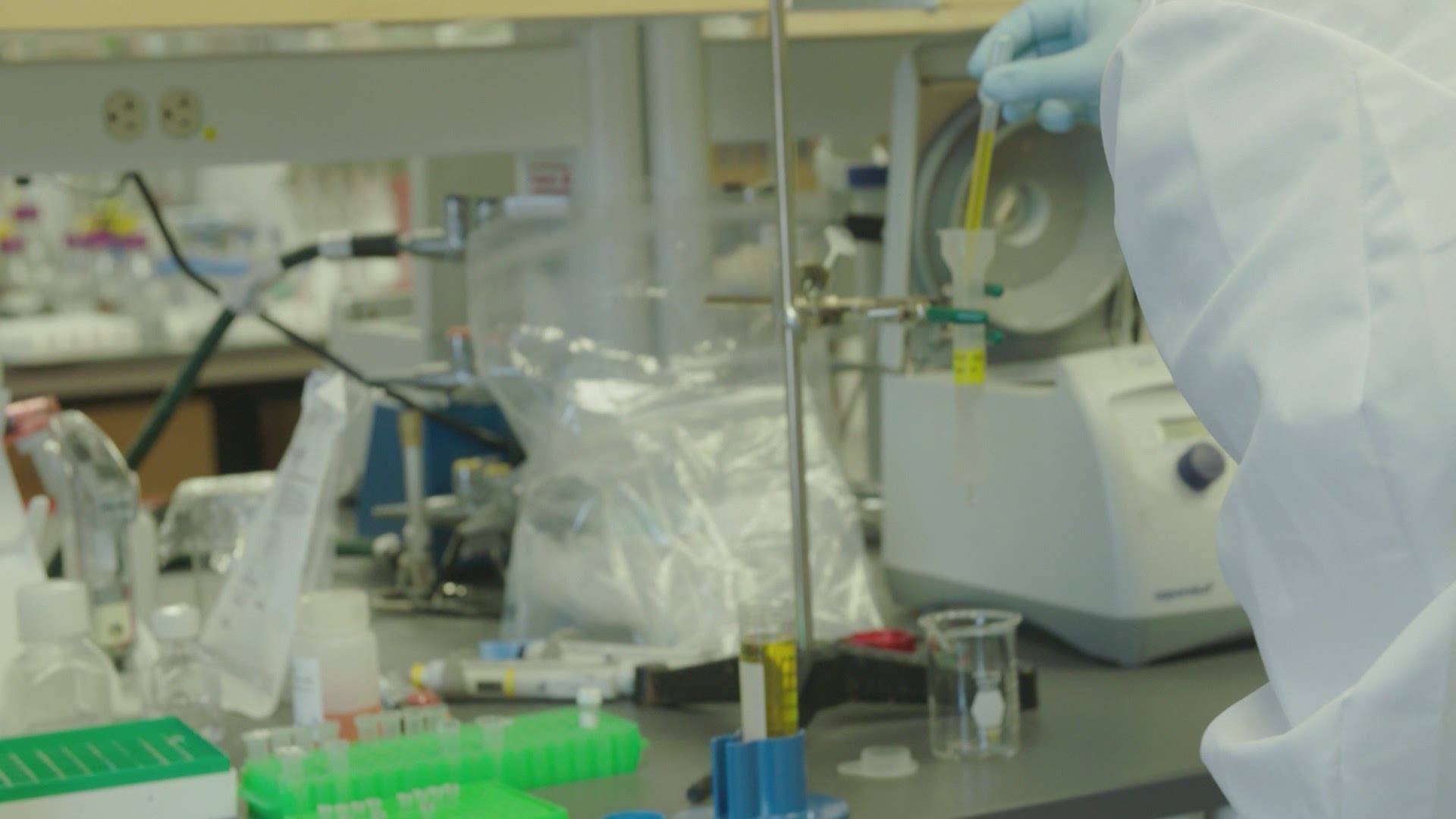CINCINNATI — Right now, there's no FDA-approved vaccine for COVID-19, but researchers are racing to create one.
It's a complicated process. Each step of creating a vaccine involves a lot of small details, which all take time.
"At the end of the day that's really what you want, is a vaccine that not only is efficacious, but also is safe," said Dr. Jennifer Pancorbo, the director of industry programs and research at North Carolina State University's Biomanufacturing Training and Education Center.
Pancorbo has to know all about vaccines in her role. She said the first step is design. It's when researchers learn about the virus: how it spreads, attacks and takes over the body. Once that's understood, scientists can find a place to stop the virus along its pathway.
"So that's what companies are trying to do — trying to use generic materials to help the body find the path to the pathogen," Pancorbo said.
After that comes manufacturing. The first step is called the upstream process, where Pancorbo said researchers grow cells and produce the "vaccine component" or "active ingredient" that will be put into the vaccine.
The second step of manufacturing is the downstream process, where the vaccine component is purified, separated and put in the final formulation —once that is stable, ready to use and easy to transport.
"That's how you end up with a vaccine in a vial or in a syringe that travels around the world in a fairly stable manner," Pancorbo said.
The FDA said safety and effectiveness are the top priorities for a COVID-19 vaccine. The agency's commissioner said this week that the process takes time because at each step, the FDA wants to analyze the data.

